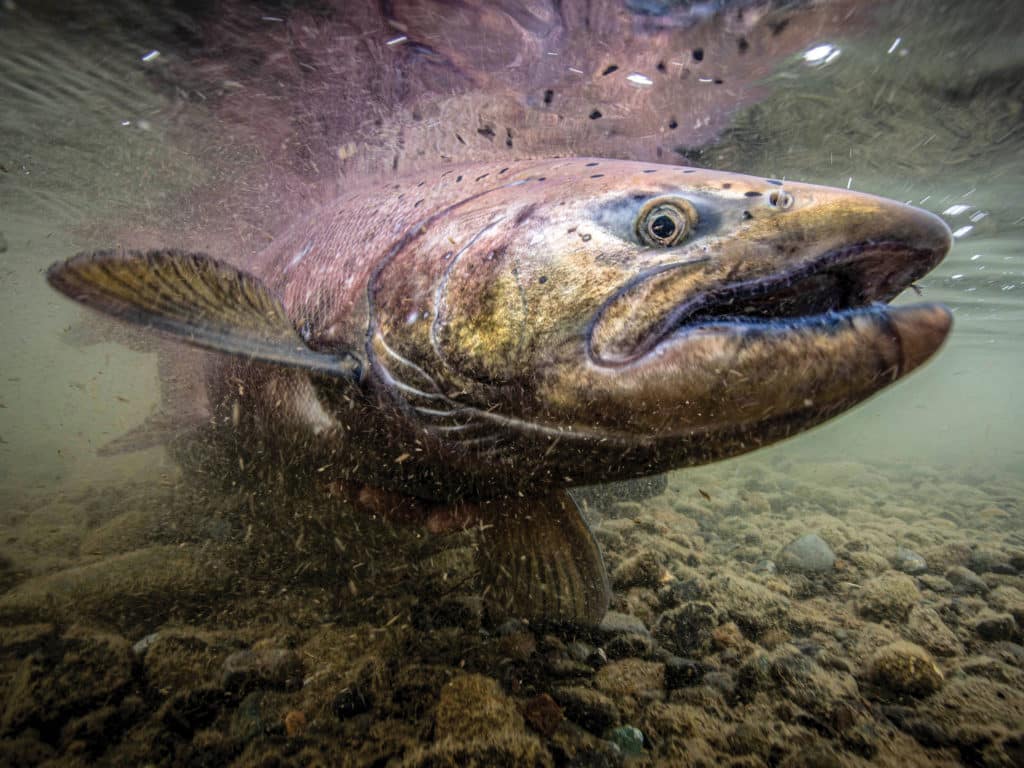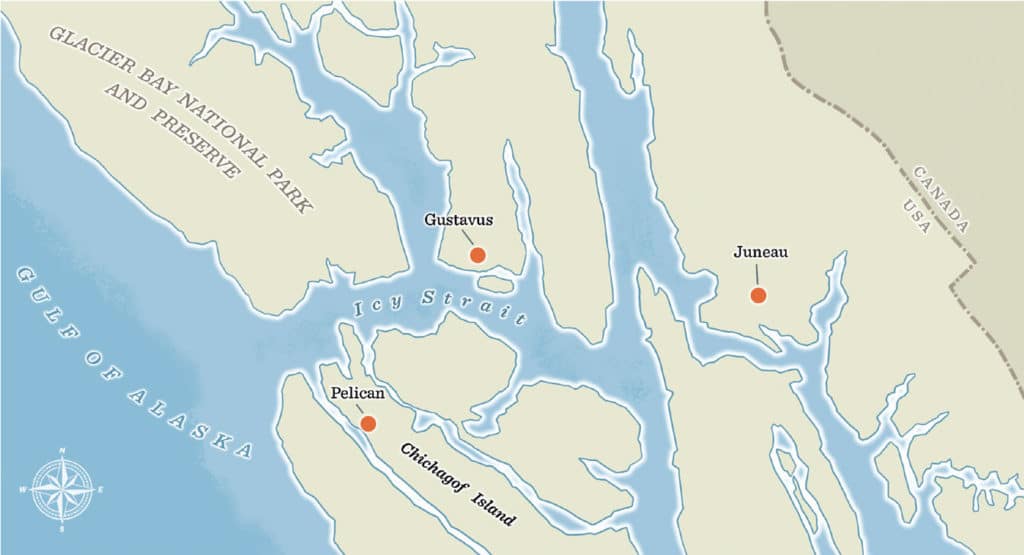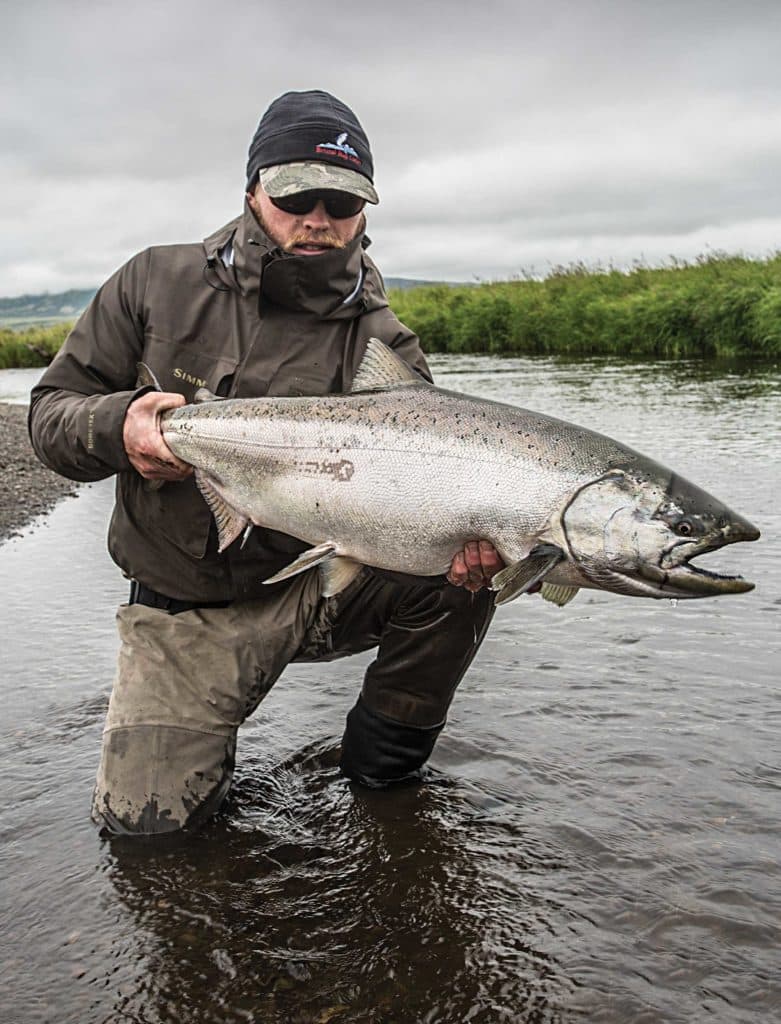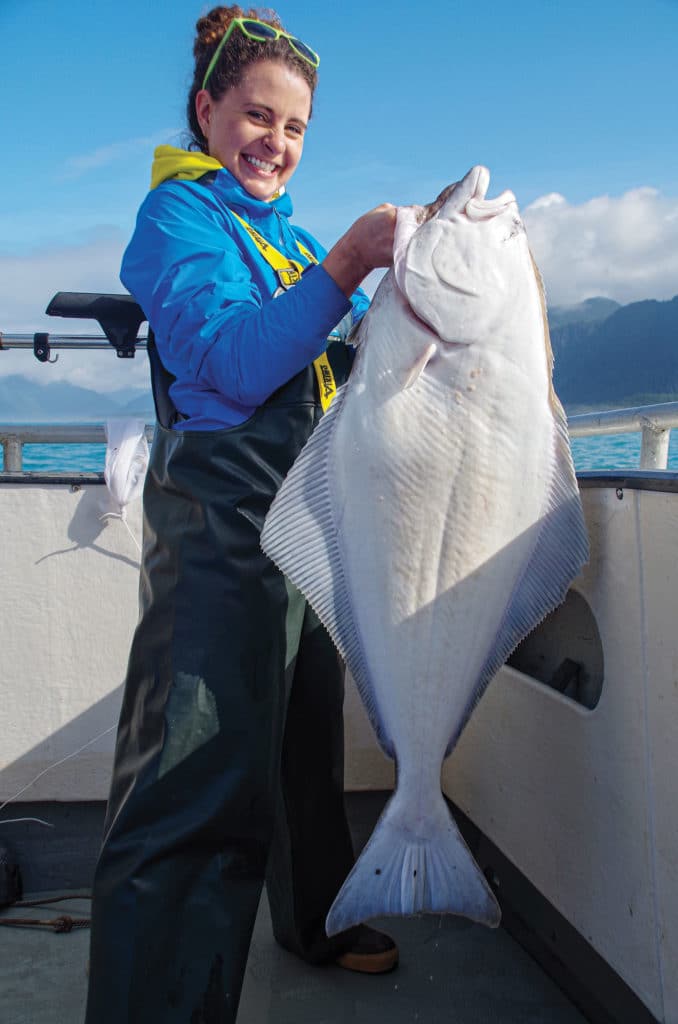
Beyond the five river otters gulping leftover herring baits along the Elfin Cove docks, we watch an Icy Strait evening shading into oranges, golds and blacks. A kicker boat with three never-say-die anglers slides into the harbor, the anglers worn down by brawls with salmon, halibut and rockfish from first daylight until dark. The strait reflects a jagged line of mountaintops that frame 3.3 million spectacular acres in Glacier Bay National Park.
It’s wild Alaska at its best in one of the most underfished salmon, halibut and bottomfish destinations in a state famous for its hot fishing locales.
Some silver (coho) salmon, two kings (chinook), a couple of nice halibut, a lingcod, limits of black rockfish and two succulent yelloweyes lie filleted and vacuum-packed in our freezer. And we lost track of the releases. Tomorrow Cross Sound will refill with fresh fish, and we’ll do it all again.

The sound is an enormous funnel at the west end of 40-mile-long Icy Strait at the Gulf of Alaska leading to hundreds of famous fisheries in the southeast. It is arguably the most heavily used salmon migration waterway in the region. Our base is a lodge in the community of Elfin Cove, population 24, built on the edge of that fish funnel.
One of three fish towns along the western Cross Sound-Icy Strait migration corridor, Elfin is a cluster of full-service guided fishing lodges connected by a boardwalk surrounding a tight little harbor at the confluence of Cross Sound and Icy Strait. Most lodges offer guided fishing. One, Waters Edge Lodge, offers self-guided adventures with a fleet of equipped 22-foot center-consoles.
Cross Sound sits on the dividing line of two federally regulated halibut areas. In Area 3A, one can catch two under 32 inches (approximately 14 pounds) and a third of any size. In adjoining Area 2C, our limit is one under 50 inches (60 pounds) or over 72 inches (196 pounds).

Twenty-seven miles east is Gustavus, population 450, portal to Glacier Bay National Park, which justifies Alaska Air service with Juneau and a dozen Gustavus charter services. True North Sportfishing offers self-guided halibut boats taking advantage of a federal regulation that allows unguided anglers to keep two fish a day of any size. With a guide, anglers are limited to one halibut under 50 inches or over 72.
On the ocean side of Cross Sound is Pelican, population 90, a commercial salmon settlement growing sport-fishing wings. It’s a float-plane hop southwest of Elfin Cove or a flight from Juneau—no cars, just a marina, half a dozen charter outfits, a couple of restaurants, and a range of accommodations, from a city-owned bunkhouse to full-service lodges.
Salmon regulations for nonresidents are fluid but likely to be one king a day over 28 inches and three or four in possession. Limits are more generous for cohos and chums at six a day.
From May to September, all three towns live and breathe destination sport fishing and offer options for guided angling with accommodations or DIY packages, upscale lodges, bare-bones basics and full-service charter boats. None have road access to the outside. In Pelican and Elfin, you move on wooden boardwalks.
Millions of salmon, including kings, silvers, chums and pinks, arrive in a summer-long stream of migrating fish pushing toward spawning tributaries in roller-coaster waves. Hit a salmon wave at the peak and action is unbelievable; hit it at the bottom, and we go halibut and rockfishing.
Despite the tremendous sport fishing, pressure is almost nil. Few private boats make the 80- to 100-mile runs from Juneau or Sitka. More probably would if they got to fight a chrome chunk of bad attitude like the one on the end of my line. Three times now the king wallowed just beyond net range, tempting Jim Goerg to reach too far with the scoop, then exploding and sounding deep or speeding away like a bee-stung greyhound pulling against the light drag on my reel.
And then I do it again—pump, reel, pump smooth and easy, rod pressure on. It never gets old.
On the right day, this place might be loaded with anything that swims in Alaska. Last summer, between salmon runs, Goerg, Sarah Cannard and I switched gears when Elfin Cove Resort owner Mike Legowski suggested running to Cross Sound for white meat with Steve McElhose on the 31-foot boat Olive.
Read Next: Salmon Fishing in Alaska

Distant fog vaporizes, softening the peaks of the distant Fairweather Range backlit in the sunrise lighting up Glacier Bay National Park. The surface of Cross Sound is oily flat when McElhose drops anchor in 120 feet off Cape Spencer. Lines are rigged with a couple of pounds of lead, circle hooks are baited with greenling, squid, pink salmon or horse herring, and chum is pitched.
Cannard is first up, bending her back into the first halibut of her life—a 38-inch, 25-pounder that ate a “flapper,” a pink salmon tail rigged to flap in current. It doesn’t take long to fill our limits.
There are lots of places in Alaska that celebrate local halibut potential, but I’ve yet to find an area more predictably productive than the 100- to 200-foot bottom from the west end of Icy Strait into Cross Sound.
With six nice halibut chilling in the fish box, skipper McElhose points Olive toward a nest of small islands on the north side of the sound, where he has a pet yelloweye hole. We round off trolling flashers, plastic squids and herrings for kings and silvers at the mouth of Cross Sound.
When They Run
- May, June: Chinook (king) salmon, halibut
- July: Silver, chum, pink and king salmon, halibut, lingcod, rockfish
- August: Silvers, halibut, lingcod, rockfish, some kings, salmon sharks
- September: Silvers, halibut, lingcod, rockfish, salmon sharks, resident kings
Ready, Set, Go
Shuttle flights to the fishing lodges on Icy Strait originate in Juneau. Alaska Air services Gustavus. The float plane shuttles at Ward Air (wardair.com), and Alaska seaplanes (flyalaskaseaplanes.com) are typically included in lodge packages. Alaska’s ferry service might be available to Gustavus and Pelican. Check dot.alaska.gov.
For an outstanding remote fishing adventure, contact:
Elfin Cove
Elfin Cove Resort
elfincoveresort.com
888-922-3474
Gustavus
Gustavus Visitor Association
gustavus.com
Pelican
Pelican Chamber of Commerce
pelican.net
541-361-5272









